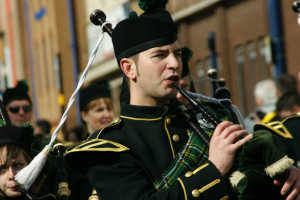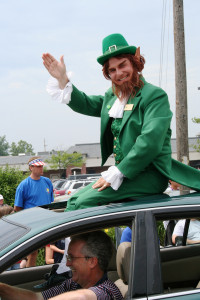St. Patrick’s Day – Origins in Psychic and Magic

St. Patrick’s Day is usually associated with the Irish. Photo by tim ellis
Saint Patrick’s Day has celebrations have expanded beyond the shores of Ireland. Today, the religious feast festival for Catholics is celebrated in America and Great Britain. Like St. Valentine’s Day, St. Patrick’s Day is named after the Irish saint St. Patrick who died on March 17th. How did St. Patrick become so revered that he had a festival thrown in his honor? The legend begins like this…
Does St. Patrick’s Day Have Irish Roots? Is There a Connection with Magic and Druids?
St. Patrick’s Day is often associated with the Irish. But is that it’s origins? St. Patrick is not Irish. He is Scottish. He was born in the 4th century to Roman parents. Before he took on the name Patricious, Patrick for short, he was known as Maewyn Succat. Patrick grew up as a non-believer of Christianity. His journey with God did not begin until he was kidnapped and sold into slavery to the Celtic Druids. This created a new outlook on life for him, and he started to form a relationship with the Christian God. St. Patrick remained a slave for six years before escaping. He credits his escape to God giving him the instructions to achieve his freedom, not a free psychic reading online or any other psychic related material.
St. Patrick’s Day True Origins

Exactly how did leprechauns become part of St Patrick’s day? PHoto by OZinOH
So if St. Patrick’s Day isn’t Irish… where did it come from? St. Patrick ran off to France. In France, he joined a priesthood and became a bishop. One day, he had a dream of the Irish people calling out to him for help. So he left France and returned to Ireland. He felt he had a mission to turn Irish pagans into Christians. The Celtic Druids arrested him for his actions. Each time, he escaped their custody. St. Patrick converted the Irish people by baptizing them and preaching Christianity to them. He also used gifts to get people’s attention. He continued this mission for 20 years. He traveled all over Ireland to establish monasteries. He also set up schools and churches for his converters. Because of his due diligence, the people of Ireland celebrate his life on March 17th.
How is St. Patrick’s day celebrated?
Shamrocks are front and center when it comes to celebrating St. Patrick’s Day. Most Irish people where them on their lapels and caps. Children where a green, white and orange badge to celebrate the day. Girls can also be seen wearing green ribbons in their hair. Why is the Shamrock so important? St. Patrick used the shamrock to represent God’s Holy trinity. The Holy trinity is the father, the son and the holy spirit. For centuries, the shamrock was a simple of luck for the Irish people. He used their pagan belief in the Shamrock’s luck to make them understand Christianity. The Shamrock has a long history in Ireland. It was a national symbol when the English invaded the Celtics. It is thing of reverence for the Irish.
Other Irish traditions associated with St. Patrick’s day
Leprechauns and Irish fairy people are also a big part of the St. Patrick’s festival. Leprechauns are mythical Irish elves that live on the island of Ireland. But leprechauns had very little to do with the day’s origins or St. Patrick himself, but rather they were added in because of their place in Irish folklore. Oddly, they actually have more to do with the Celtic times and the Druids than they do with any Christian saint. One might say it’s more than just irony that a pagan creature features so prominently in a Christian day.
There are many legends surrounding St. Patrick. The best thing to take from St. Patty’s day is that the Ireland people are proud to be Irish. They have overcome a lot, and thanks to St. Patrick they know they have to the strength to continue overcoming any obstacle. But there’s no reason than pagan origins, Druid cults or odd creatures from Irish folklore should prevent you from grabbing a green beer, dressing up in all green and enjoying St. Patrick’s Day!
Latest posts by Brandi Murray (see all)
- Finding Free Psychic Chat Rooms Online - August 26, 2015
- Finding a Free Tarot Reading or Free Psychic Reading Online - August 25, 2015
- Horoscope Signs – Cancer - July 24, 2015



